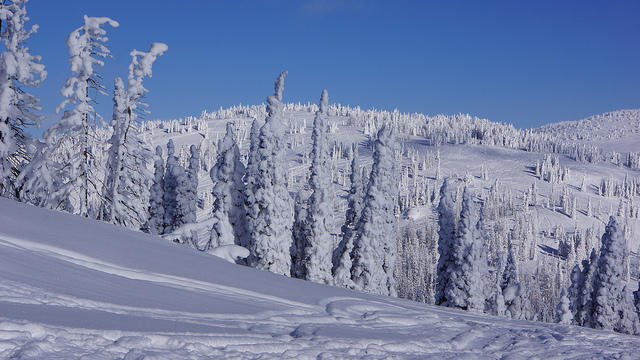
Cleaner snowpack could help slow climate change, provide more drinking water
Listen
(Runtime 1:03)
Read
For mountain snowpack to melt slowly, not all of the white fluffy stuff is created equally. Northwest scientists have found reducing greenhouse gas pollution could make snow less dirty. That means it stays in the mountains longer, according to a study published in Nature Communications.
If there is a lot of black carbon or dust in the air, it can mingle with mountain snow. That dirty snow absorbs more sunlight than cleaner snow, making it melt faster.
As the climate warms, every bit of snowpack will be important, said climate scientist and Pacific Northwest National Laboratory Fellow Ruby Leung. Climate change will affect snowpack in two ways: first, warmer temperatures mean more snow will fall as rain. Second, the snow that does accumulate will melt faster.
So, scientists at PNNL set out to discover whether cleaner snow could help balance out winter warming.
They looked at a “business as usual scenario” and a scenario where people stop emitting greenhouse gasses quickly.
Turns out, Leung said, although greenhouse gasses stick around for nearly 100 years in the atmosphere, snow can clean up really quickly.
“Immediately, you see the effects of the reduction of these tiny particles. You can see very quickly that the snow will become cleaner,” said Leung, who is a Battelle Fellow at PNNL.
Therefore, cutting back carbon not only reduces greenhouse gas emissions, the study showed, it does help snow melt more slowly.
“As you cut down on greenhouse gas emissions, you also cut down on the emissions of these kinds of particles because they are actually emitted by the same process,” she said.
Blowing dust, wildfire smoke and woodstove smoke also contribute to dirtier snow. While it’s hard to control desert dust, conversion of forests to agricultural areas might kick up more blowing dust in the future, she said.
Under the sustainable scenario, cleaner snow will become very important, she said.
“Kind of like offsetting a large fraction of this snowmelt due to global warming,” Leung said.
Leung said that could help with future water resources for people around the world, from the Himalayas to the Alps.















